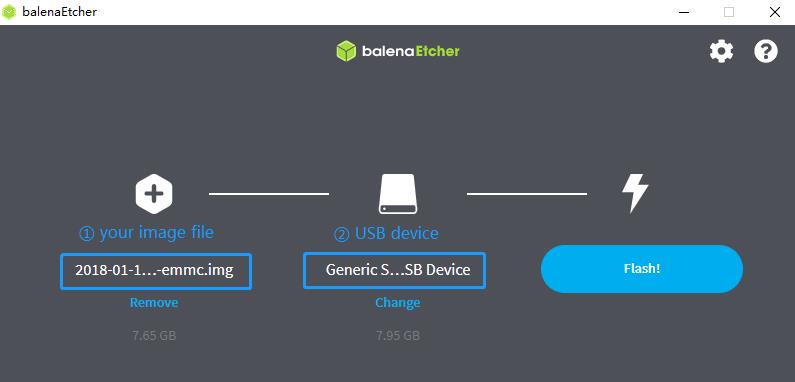
¶ Introduction
The Banana Pi R64 is a router based development board, which can run on a variety of open source operating systems including OpenWrt,Linux. It has 4 Gigabit LAN ports, 1 Gigabit WAN, and AC wifi AP function. use 64 bit chip design.
| More Infomation: Banana Pi BPI-R64 |
¶ specifications
-
MediaTek MT7622,1.35GHZ 64 bit dual-core ARM Cortex-A53
-
1G DDR3 SDRAM
-
Mini PCIE interface support 4G module
-
Built-in 4x4n 802.11n/Bluetooth 5.0 system-on-chip
-
MTK7615 4x4ac wifi on board
-
Support 1 SATA interface
-
MicroSD slot supports up to 256GB expansion
-
8G eMMC flash (option 16/32/64G)
-
5 port 10/100/1000 Mb Ethernet port
-
1 Port USB 3.0
-
Slow I/O:ADC, Audio Amplifier, GPIO, I2C, I2S, IR, PMIC I/F, PWM, RTC, SPI, UART
-
POE function support
¶ Development
¶ Prepare
-
Prepare 8G/above TF card, USB-Serial interface
-
Using your USB-Serial(3.3V,Baud: 115200) Connect debug console on R64
-
Default IP address for LAN port: 192.168.1.1
-
User name/password: pi/bananapi ,root/bananapi.
Or the user is root without a password. -
WIFI: Operwrt
¶ Linux
¶ Install Image to SDcard
Windows PC
Balena Etcher is an opensource GUI flash tool by Balena, Flash OS images to SDcard or USB drive.
-
Click on "Flash from file" to select image.
-
Click on "Select target" to select USB device.
-
Click on "Flash!" Start burning.

Linux
-
bpi-copy
-
Install bpi-tools. If you can’t access this URL or any other problems, please go to bpi-tools repo and install this tools manually.
apt-get install pv curl -sL https://github.com/BPI-SINOVOIP/bpi-tools/raw/master/bpi-tools | sudo -E bash -
After you download the image, insert your TF card into your Ubuntu.Execute
bpi-copy xxx.img /dev/sdxinstall image on your TF card
-
-
dd
Mount SDcard device /dev/sdX partition if mounted automatically. Actually bpi-copy is the same as this dd command.
$ sudo apt-get install pv unzip $ sudo unzip -p xxx-bpi-m5-xxx.img.zip | pv | dd of=/dev/sdX bs=10M status=noxfer
¶ Install Image to eMMC
Before burning image to eMMC, please prepare a SD card with flashed bootable image and a USB disk. Let’s take OpenWrt image (mtk-bpi-r64-preloader-emmc.bin,2020-04-09-OpenWRT-mtk-bpi-r64-EMMC.img) for example.
| Note: You can download the ".bin" file from github: https://github.com/BPI-SINOVOIP/BPI-R64-openwrt/tree/master/staging_dir/target-aarch64_cortex-a53_musl/image |
-
Insert the flashed SD card and power on to start the board.(the image on the SD card can be OpenWrt or other linux OS like ubuntu…)
-
Copy eMMC bootable OpenWrt image(mtk-bpi-r64-preloader-emmc.bin,2020-04-09-OpenWRT-mtk-bpi-r64-EMMC.img) to USB disk, if the image is compressed please uncompress it before copying to USB disk.
-
Plug in USB disk to the board, and mount the USB to /mnt or other directory as follows: (you can skip mounting if it is mounted automatically)
mount -t vfat /dev/sda1 /mnt cd /mnt -
Execute following command to enable and copy image to eMMC:
echo 0 > /sys/block/mmcblk0boot0/force_ro dd if=2020-04-09-OpenWRT-mtk-bpi-r64-EMMC.img of=/dev/mmcblk0 dd if=mtk-bpi-r64-preloader-emmc.bin of=/dev/mmcblk0boot0 mmc bootpart enable 1 1 /dev/mmcblk0 -
Shutdown, remove SD card and USB disk, and restart the board from eMMC.
¶ Network-Configuration
Network-Configuration : http://www.fw-web.de/dokuwiki/doku.php?id=en:bpi-r2:network:start
¶ Advanced Development
¶ GPIO
40 Pins Definition

¶ GPIO Control
echo xxx > /sys/class/gpio/export
echo in/out > /sys/class/gpio/gpioxxx/direction
echo 0/1 > /sys/class/gpio/gpioxxx/valueCheck the base gpio, you could see mine is 409

For example: if you want to change gpio 22 as out highlevel, you need input commands like this:
echo 431(22+409) > /sys/class/gpio/export
echo out > /sys/class/gpio/gpio431/direction
echo 1 > /sys/class/gpio/gpio431/value¶ PWM Control
echo x >/sys/class/pwm/pwmchip0/export
echo 200000 >/sys/class/pwm/pwmchip0/pwmx/period
echo 100000 >/sys/class/pwm/pwmchip0/pwmx/duty_cycle
echo 1 >/sys/class/pwm/pwmchip0/pwmx/enable¶ SPI touch panel
SPI Panel module:
2.4" Touch Screen TFT LCD with SPI Interface, 240x320 (ILI9341 + ADS7843/XPT2046/HR2046)
SPI Panel <–> BPIR64
T_DO, T_DIN, T_CLK <–> SPIC_0: MOSI / MISO / CLK
T_CS <–> SPI-CE0
T_IRQ <–> IO-37
SDO, SCK, SDI <–> SPIC_1: MOSI / MISO / CLK
LED <–> PIN-31
DC <–> PIN-11
RESET <–> PIN-13
CS <–> SPI-CE1
GND <–> GND-9
VCC <–> 3.3V-1DTS Modification:
/ {
backlight: backlight {
compatible = "gpio-backlight";
gpios = <&pio 82 GPIO_ACTIVE_HIGH>; //PIN31 IO-31 : GPIO82
default-on;
};
};&pio {
spic0_pins: spic0-pins {
mux {
function = "spi";
groups = "spic0_0";
};
};
spic1_pins: spic1-pins {
mux {
function = "spi";
groups = "spic1_0";
};
};
}&spi0 {
pinctrl-names = "default";
pinctrl-0 = <&spic0_pins>;
status = "okay";
touch@0 {
reg = <0>; //CE0
compatible = "ti,ads7843";
interrupt-parent = <&pio>;
interrupts = <86 0>; //PIN37: IO-37 == GPIO86
pendown-gpio = <&pio 86 0>;
spi-max-frequency = <1000000>;
vcc-supply = <®_3p3v>;
wakeup-source;
};
};&spi1 {
pinctrl-names = "default";
pinctrl-0 = <&spic1_pins>;
status = "okay";
display@0{
compatible = "ilitek,ili9341";
reg = <0>; //CE0
spi-max-frequency = <32000000>;
dc-gpios = <&pio 51 GPIO_ACTIVE_HIGH>; //PIN11 UART1-TXD : GPIO51
reset-gpios = <&pio 52 GPIO_ACTIVE_HIGH>; //PIN13 UART1-RXD : GPIO52
backlight = <&backlight>;
};
};Kernel config:
+CONFIG_FB_TFT_ILI9341
+CONFIG_FB_TFT
+CONFIG_FB
+CONFIG_BACKLIGHT_LCD_SUPPORT
+CONFIG_BACKLIGHT_CLASS_DEVICE
+CONFIG_BACKLIGHT_GPIO
+CONFIG_INPUT
+CONFIG_INPUT_TOUCHSCREEN
+CONFIG_TOUCHSCREEN_ADS7846Application:
| Package | + Description | Source |
|---|---|---|
fbv |
framebuffer image viewer |
|
input-event-daemon |
input-event-daemon with touchTEST event |
input-event-daemon config that show image by touch area: (I don’t know why are the coordinates so strange, but the result of my actual touch and print out that it is like this)
[Global]
listen = /dev/input/event0
listen = /dev/input/event1
[TouchTEST]
340,400,3440,1860 = cat /dev/zero > /dev/fb0; fbv -f /root/bpi_608x429.jpg -s 1
340,2260,3440,1860 = cat /dev/zero > /dev/fb0; fbv -f /root/openwrt_449x449.png -s 1Banana Pi BPI-R64 SPI touch panel test: https://www.youtube.com/watch?v=ikag-D_TI0g&feature=youtu.be
¶ Sata
-
If you want to use Sata interface on R64, you need to give GPIO90 low level
echo 499 > /sys/class/gpio/export echo out > /sys/class/gpio/gpio499/direction echo 0 > /sys/class/gpio/gpio499/value -
Test a TOSHIBA HDD DISK, the Read/Write performance are below:
-
Read from disk: 50MB/s command:
dd if=/dev/sda of=/dev/null bs=1M count=1024 -
Write to disk: 38MB/s command:
dd if=/dev/zero of=/dev/sda bs=1M count=1024
-
-
Test a SAMSUNG SSD DISK, the Read/Write performance are below:
Read from disk: 360MB/s command:
dd if=/dev/sda of=/dev/null bs=1M count=1024Write to disk: 200MB/s command:
dd if=/dev/zero of=/dev/sda bs=1M count=1024
¶ PCIe
-
If you want to use PCIe interface on R64, you need to give GPIO90 high level
echo 499 > /sys/class/gpio/export echo out > /sys/class/gpio/gpio499/direction echo 1 > /sys/class/gpio/gpio499/value -
PCIe supports EC-25 4G module.

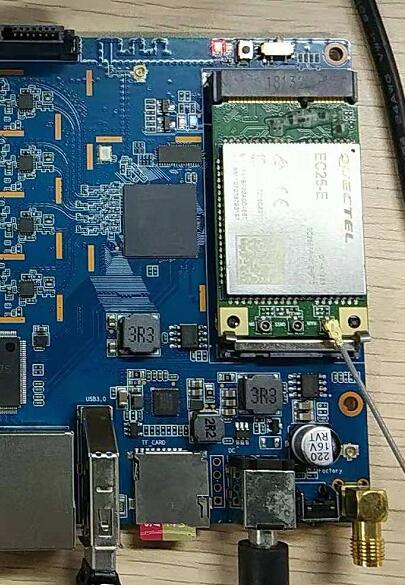
¶ GMAC
Use iperf3 to test gmac
-
On PC Terminal.Execute
iperf3 -s -
On R64 console:
TCP test:
iperf3 -c serverIPUDP test:
iperf3 -u -c serverIP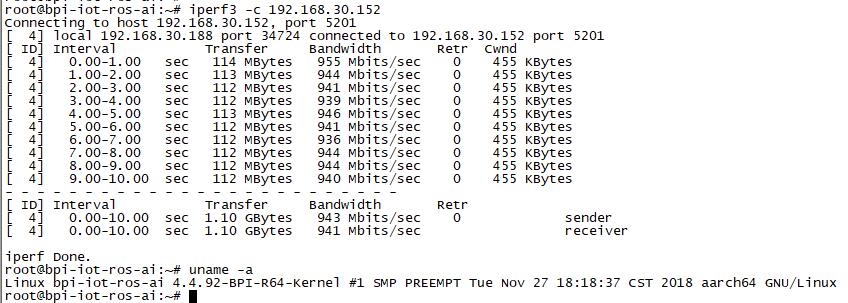
¶ BT & BLE on R64
R64 BT Architectural
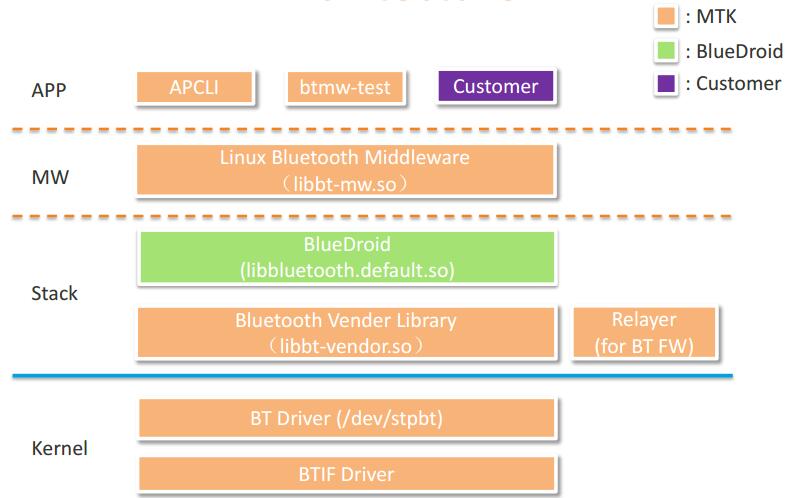
-
BLE on R64
-
Input Command "btmw-test", you will enter to "btmw_test_cli" command line

-
Here are some example commands:
MW_GAP name 7622_BT /*rename bt device*/ MW_GAP info /*check local BT device info*/ MW_GATTC scan /* start ble scan*/ MW_GATTC stop_scan /* stop ble scan*/
¶ R64 LAN Function
-
LAN eth interface is eth2
ifconfig eth2 up-
Config the ip, "ifconfig eth2 192.168.1.1".

-
Config your dhcp server
vim /etc/dhcp/dhcpd.confadd these configurations.
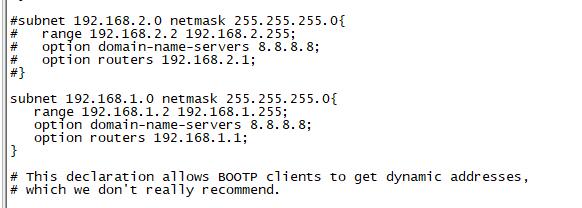
-
Start dhcp server, "dhcpd eth2".
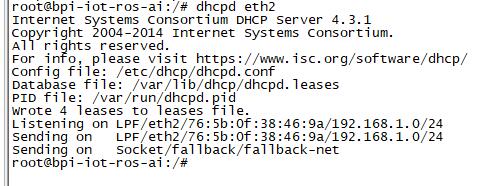
-
Then config iptables and set package forward.
-
Add "net.ipv4.ip_forward=1" to "/etc/sysctl.conf"
-
"/sbin/sysctl -p" to make forward work
-
"iptables -t nat -A POSTROUTING -s 192.168.1.1/24 -o eth3 -j MASQUERADE"
-
¶ Ap mode on R64
-
Find "mt_wifi.ko" and insmod it.
insmod ./lib/modules/4.4.92-BPI-R64-Kernel/extra/mt_wifi.ko -
Then you will see ra0 and rai0.
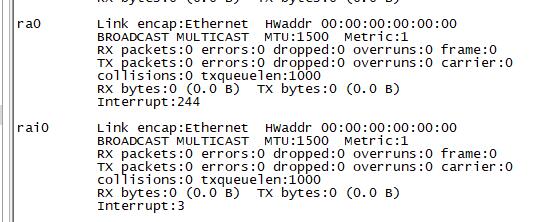
-
ra0 is MT7622 2.4G wifi
-
rai0 is MT7615 5G wifi
¶ 2.4G WiFi
-
Use "ifconfig ra0 up" to enable it.
-
Config the ip, "ifconfig ra0 192.168.1.1".
-
Config your dhcp server, "vim /etc/dhcp/dhcpd.conf", add these configurations.

-
Start dhcp server, "dhcpd ra0". Then config iptables and set package forward.
-
Add "net.ipv4.ip_forward=1" to "/etc/sysctl.conf"
-
"/sbin/sysctl -p" to make forward work
-
"iptables -t nat -A POSTROUTING -s 192.168.1.1/24 -o eth3 -j MASQUERADE"
-
¶ 5G WiFi
-
Use "ifconfig rai0 up" to enable it.
-
Config the ip, "ifconfig rai0 192.168.1.1".
-
Config your dhcp server, "vim /etc/dhcp/dhcpd.conf", add these configurations.

-
Start dhcp server, "dhcpd rai0".Then config iptables and set package forward.
-
Add "net.ipv4.ip_forward=1" to "/etc/sysctl.conf"
-
"/sbin/sysctl -p" to make forward work
-
"iptables -t nat -A POSTROUTING -s 192.168.1.1/24 -o eth3 -j MASQUERADE"
-
¶ FAQ
MT7622 Reference Manual for Develope Board(BPi)
BaiDu Drive: https://pan.baidu.com/s/1KduFT2MUvMs2FhOF4A8kQQ